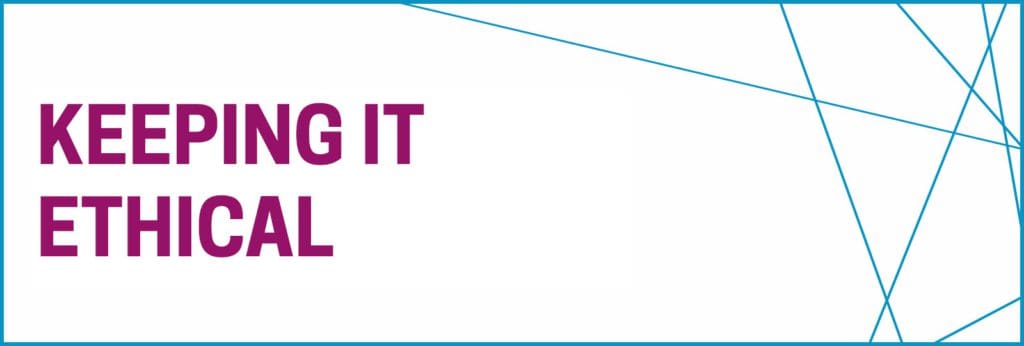Keeping it Ethical is our weekly blog series highlighting the 33 Principles for Good Governance and Ethical Practice. Throughout the series, we hope to highlight the importance of each Principle, the helpful resources associated with it, and learn more from you about how you’ve incorporated these Principles into your charitable organization.
Congratulations! You’ve got a board, they meet regularly, and you’ve finally found that perfect Goldilocks ratio of board members uniquely suited for your organization.
What’s next on the effective governance train you may ask?
Diversity! Choo Choo!
Principle 11 encourages us to reflect deeply on board diversity; after all, the diversity of a board plays a foundational role in driving an organization’s transparency and accountability — both internally and externally.
So, what does diversity mean? By its nature diversity is a multifaceted construct and its application to a board setting starts with people and representation.
We must value diverse backgrounds (physical, social, and psychological differences at all levels) and push for greater diversity on boards by ethnicity, race, gender, and age. That’s not all. The imperative for boards is to further consider the diversity of technical knowledge, subject matter expertise, skills, resources, and community representation.
Principle 11 offers some specific words of wisdom on two key components for board representation:
- Financial literacy: You must have a board member with financial literacy to sustain critical organizational components, including to review of financial statements, support audit evaluation, and generally ensure solid financial moves. Public companies are actually required to have a qualified financial expert sitting on their board’s audit committee, and while the eminent Sarbanes-Oxley Act of 2002 does not mandate the same for nonprofits, it’s an important lead to follow.
- Community representation: Optics aside, on a practical level many funding sources like government grants can require the board to have members representative of the population they serve. Having community-grounded board members reinforces accountability to the community being served by your work.
Community representation is a great reality check — diversity alone is soooooo 2001!
We’ve moved on and equity is THE north star we should all be working toward.
Board diversity has little lasting impact without looking at system-level change. Equity and inclusion are important pieces on what we do after the “easy” work of representation. Equity removes barriers and changes systems, allowing for fair access to opportunities across all groups. Inclusion means that all of these groups feel their organizational culture not only respects them but actively supports their voice.
It’s 2018, the current state of the playing field shows us that the nonprofit sector is behind on leadership and more specifically we’re behind on racial equity. Last year’s Leading with Intent report told us nonprofit leadership is no more diverse than it was two years ago, and nonprofit executives and board chair numbers remain at 90 percent white.
Earlier this year, the Building Movement Project’s Race to Lead report confirmed how the racial leadership gap for the nonprofit sector has remained the same, at under 20 percent, for fifteen years while also debunking the leadership pipeline myth.
Don’t feel paralyzed by the DEI challenge just yet. There are some incredible resources, both on technical and strategic levels, that are available to help you take meaningful action.
Technical tools – are readily available online. Tools like this board matrix allow for a quick board inventory to understand your current state and see any diversity gaps.
Strategic tools – the research is building and the data is here. Our partners at ProInpsire have rolled out an incredible resource with the Awake to Woke to Work: Building a Race Equity Culture. The publication helps break down and create a shared vocabulary for racial equity work and includes an assessment of the different levers used to drive an equitable culture. Spoiler alert: the board is a system lever!
We have curated a DEI Resource Center in partnership with ProInspire and there are even more emerging platforms like the DEI Expert Hub. This hub enables information exchange on race equity practitioners to help your organization procure the resources (like equity audit and training support) required to lead lasting outcomes.
If you have stuck with me this far, pat yourself on the back for not fleeing from discomfort. Or kudos, your self-selection bias as a DEI champion naturally pulled you through. Either way, don’t let fear, bias, or uncomfortable conversations keep you from moving forward on vital DEI driven work. The principles make the case for a diverse board on your behalf.
___
Learn more about Principle 11 and the associated resources.
Are we missing a great resource associated with this Principle? We want to hear that, too. Leave your thoughts in the comments and let us know what you think. You can also use #npethics on social media.



